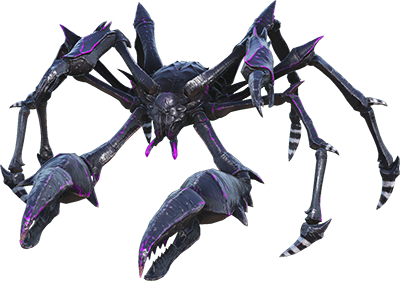Hello All,
In September 2019, I decided to buy myself a 3D printer.
After shopping around I decided to bite the bullet and buy an "Original PRUSA i3 MK3" 3D printer.
I've always liked toys and over the years, I developed a long list of things I wanted to have but did not exist.... My list contained a variety of items. But before I started to print them I needed to decide of the scale.
For the items for which it made sense, I decided to go with a scale of 1:24 which happens to be the scale of Playmobil.
For my first project, I decided to go with the Karkinos from Ark Survival Evolved. I liked the game Ark Survival Evolved, the game play of the Karkinos and I thought it had a cool model. I also thought that it would be a nice challenging built to test my early skills.
The Ark IP belongs to Studio Wildcard.
The pieces of software (all free) I used to extract the model from the game engine, to modify it and to print it were:
- ARK Editor (Contains all the models)
- Autodesk Fusion 360 (Free for personal use and the program I used the most)
- Meshmixer (Used to fix the meshes that were giving me headaches)
- PrusaSlicer (Used to slice the stl into gcode for the 3D printer)
Game engines use a lot of technology to use a relatively low poly count model to smooth it, add texture, reflection, glow and so on to make them look superb. When you extract a model, it's rare that you'll be able to print it without smoothing/modifying it; unless that is that you're a cubism enthusiast... Another problem that you'll most likely encounter is that the mesh of the model may not be closed (
watertight,
non-manifold). If people are interested in how these problems were fixed, let me know in the comment and I might add in a small tutorial (to add to all the already existing ones on the web...).
Since I wanted to have an articulated model, when I was adjusting the model, I split it up into 51 different pieces all having a ball joint. Multiple tests were performed/printed to figure out a good compromise regarding the ball joints.
For the saddle, I needed to modify it so that a Playmobil figure could sit in it. I also used leather and jewelry connectors to simulate the attachments. The saddle was also modified with a longer platform in the back to accommodate Playmobil accessories.

Speaking of accessories, I tried to get accessories that would make me remember the game that I like so much. After searching in the dev kit for a while I decided to get the following models and to make them usable by the Playmobil figures by adding in holes with grasping cylinders for the hands and modifying the chosen helmet so that it fits.
I also needed to print some connectors to be able to snap the accessories to each other or any Playmobil system. The items I chose were:
Like multiple people, during the Covid-19 pandemic, I decided to expend my skillset with an airbrush. After gluing, sanding, gap filling with primer, sanding more, gap filling again and sanding a last time, I painted the Karkinos in a color scheme that pleased my significant other (mother to my 2 kids) and respected the in-game color pallet, a deep blue on top and a purple on the bottom (just like the in-game Explorer Notes; second image from the top of this blog).
Now for the Karkinos itself, here are a few pictures of how the finished project looks like.
I've learned a lot of things while doing this project and the major items learned are below.
Things to ameliorate when doing the next model:
- Take more time when smoothing a model to not loose any important details.
- Have multiple different ball joint sizes for different parts.
- Understand the movement limit/freedom of movement of the placed ball joint and modify them to have the wanted movement/ add more complicated joints if needed.
- Add details to the main model, that would normally be there from computer graphics (bump/normal map), on the model before printing.
- Print in correct orientations and if needed add in snap points if I need to split a piece for better printability (easier to glue afterward).
- Use a plastic color closer to the finished color so that the ball joint and scratches don't stand out
Thanks for reading and leave a comment if you want to see more or have better explanations!
;)



Comments
Post a Comment